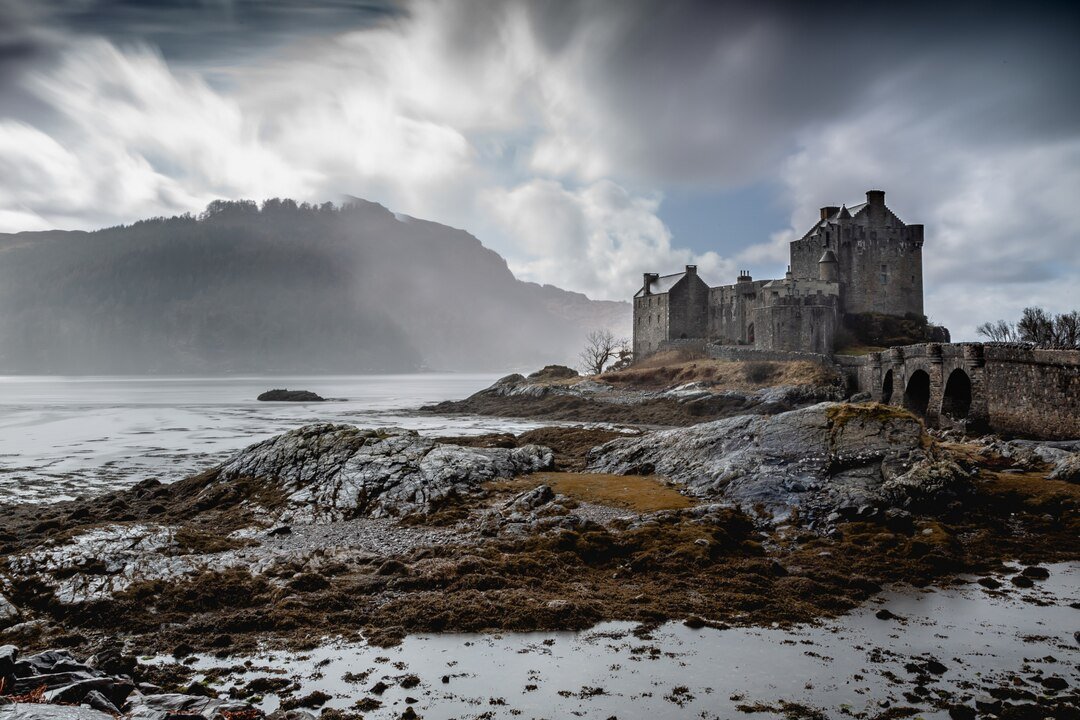There are places you visit — and then there are places that claim a piece of you. Ireland is the latter.
It doesn’t dazzle with excess or spectacle. It whispers, it sings, it pulls you through rain-slicked roads and endless green fields until you feel like you’ve always known it. There’s something ancestral about it, even if your roots grow elsewhere.
This is not a story about pub crawls or tour buses. This is a journey into the wild, windbitten, story-laced soul of a land that feels half-real, half-legend.
The Landscape Writes Its Own Poetry
Drive through Ireland and you’ll think someone painted the whole country with a soft brush dipped in green. Not just one green — every shade imaginable, layered like velvet.
The hedgerows hum with bees. The skies are moody and changing. Cows pause mid-chew to watch you pass, as if they know you’re not from around here. And beyond all of it, you see the bones of ancient hills — Ireland’s quiet giants.
There’s water everywhere. Loughs (lakes) that mirror the sky, rivers that cut through villages like silver threads, and the Atlantic, forever clawing at the western coast in foamy crescendos.
If you stand at Slieve League Cliffs in County Donegal, higher than the Cliffs of Moher, you don’t just see Ireland — you feel it watching you back.
Stones That Speak of Ghosts
Ireland isn’t loud about its history. It doesn’t need to be.
You’ll stumble across Neolithic tombs older than the pyramids. Standing stones that have no plaque, no fence — just there, in the middle of a sheep pasture, whispering secrets in languages lost to time.
In places like The Burren, the landscape becomes lunar — limestone pavements cracked open like dry earth. And still, little purple flowers grow from the cracks. You realize this land has survived. Ice, famine, war, silence — it’s still here. And it carries its history in the soil.
Castles aren’t hard to find — some crumbling, some reborn into cozy inns. But it’s the ruins that tug at the heart. Moss-covered, windowless, surrounded by fog, they seem less like buildings and more like ghosts with doorways.
Stories Hide in the Wind
In Ireland, myths aren’t in books — they’re in the air, the trees, the way the light hits the hills.
A local in Connemara will tell you about the banshee — not with fear, but with familiarity, like she’s just another neighbor. In County Kerry, someone will explain how fairy forts (ringed earth mounds) should never be disturbed — and you’ll believe them, because why risk it?
There’s a respect for the unseen here. For what can’t be measured. You’ll see ribbons tied to hawthorn trees — wishing trees, where people leave hopes and offerings. These aren’t touristy stunts. They’re acts of faith.
Even the language — Gaeilge — carries magic. Words twist like rivers. Names sing like spells. You don’t have to understand every word to feel the weight they carry.
The Sea Is Always Part of the Story
Ireland’s coastline doesn’t just edge the country — it defines it.
Villages like Doolin, Dingle, and Kinsale are small, salt-crusted, and absolutely alive. Fishing boats sway in harbors. Pints clink by peat fires. And always, always, there’s music — fiddles, bodhráns, and voices that make you close your eyes and just listen.
Take a walk along the Causeway Coast in Northern Ireland, where basalt columns form the famous Giant’s Causeway — geology shaped by folklore. They say giants built it. Look at those perfect hexagons and try not to believe them.
Or lose yourself on the Skellig Ring, where the road narrows and curves in a way that dares you to keep driving. At the end of it, you might glimpse Skellig Michael, the remote monastic island from Star Wars — but long before Hollywood, monks lived there, chasing silence at the edge of the world.
Hospitality Isn’t a Performance
There’s no script in Ireland’s welcome.
You don’t get surface-level smiles or transactional greetings. You get genuine curiosity. A “how’s your day been?” that actually wants an answer. A hot tea placed in your hands before you even ask.
Stay in a countryside B&B and you’ll be handed a breakfast big enough to fuel a mountain climb — whether you’re climbing or not. But it’s more than food. It’s the host sitting down to chat. Asking where you’re headed. Offering suggestions that don’t show up in travel guides.
In a small-town pub, a stranger might join your table and by night’s end, they’re showing you family photos and giving you their cousin’s number in Cork — just in case you pass through.
The Rain Has a Rhythm
Yes, it rains in Ireland. Often.
But don’t see that as a curse — see it as a soundtrack.
It taps softly on thatched roofs. It streaks down pub windows, making the golden light inside feel even warmer. It leaves everything smelling clean, alive, earthy. It paints the whole world with reflection.
You’ll walk through a light mist that seems to hold stories. The kind of weather that makes you want to slow down, sip something warm, and just exist.
And then — just like that — the clouds part, and the sun comes down like a spotlight. Everything glows. It feels earned.
Music Is a Living Thing
Traditional Irish music isn’t preserved in museums — it’s played tonight, probably in the corner of the pub down the lane.
You’ll hear jigs and reels, yes — but also songs of longing, rebellion, humor, and heartbreak. Songs passed down through generations, carried from fire-lit kitchens to modern stages.
Sit in a place like The Cobblestone in Dublin or Tigh Coili in Galway, and you’ll see musicians gather with no plan — just instruments and instinct. Someone starts a tune, others join in. It’s loose, raw, perfect.
You don’t have to know the lyrics. Just let the rhythm guide your foot. Let the sorrow and joy live together in one song.
Where Time Means Something Else
You won’t rush in Ireland. The roads curve, the people pause, and everything takes the time it takes.
You’ll stop for sheep crossing a lane. You’ll linger longer than planned in a conversation. You’ll miss your schedule — and not miss it at all.
That’s part of the charm. Ireland doesn’t ask you to fill your days. It invites you to empty them a little. To sit by a stone wall and watch the wind. To walk without aim. To just… be.
And somehow, those moments — the quiet ones — become the most vivid in memory.
You Don’t Leave the Same
Traveling through Ireland isn’t about the checklist. It’s about how it changes your pace, your tone, your awareness.
You learn to find beauty in mist. In moss. In silence. In a stranger’s laugh. In the way stories survive in songs and stones.
You leave not with souvenirs, but with a kind of homesickness — not for home, but for a place you never knew you needed.
So pack your curiosity. Bring an open heart. Don’t mind the rain. And let Ireland show you its wild, poetic, quietly powerful soul.

